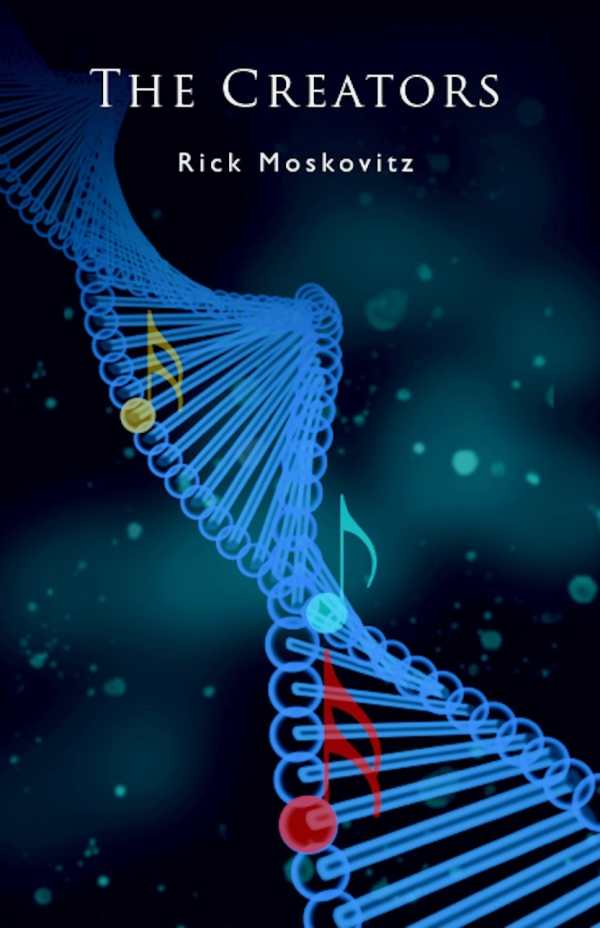The Creators
Book 3: Brink of Life Trilogy
This trilogy-ending science fiction title makes an entertaining case for the beauty and dignity of life cycles.
Rick Moskovitz’s science fiction trilogy concludes with The Creators, in which an assembled cast faces the question of eternal life head-on.
Lead by Natasha Takana, the cohorts join together to confront the mystery of humanity’s origins, its potential futures, and the enduring threat of Ganymede once and for all. Because her father had the Ambrosia Conversion before her conception, Natasha is a human-immortal hybrid with self-repairing DNA and potential beyond regular human beings. One day, that potential takes her deep into the mystery of human DNA, where advanced artificial intelligence discovered a message about humanity’s creation left by beings in a parallel universe.
Making it her mission to decipher the details of the Coded Word and meditating to a musical translation of its double helix, Natasha unlocks the key to traveling the multiverse. As far as she knows, she’s the only one of her kind, but all that’s about to change. As she travels the multiverse, she faces down Ganymede and learns how to restore death to its rightful place.
The novel fuses mysticism and science, playing with the idea that any science that’s advanced enough becomes indistinguishable from magic. The incorporation of DNA coding and multiverse theories adds an exciting twist to Natasha’s quest; both also expand the narrative beyond the straightforward action plots of prior trilogy titles.
Parallel story arcs play out between groups of characters as people from throughout the trilogy intersect. The ultimate showdown resolves questions about Ganymede’s clandestine mission and the deeper issues at stake. For the most part, the multiverse is utilized well, with the exception of crossing timelines between humanity’s future and the creators’ denouement.
As Natasha probes alternate pasts and futures, the conclusion takes on a H. G. Wells tone that’s shaded by the climate crisis, focused on its cost to human psyches and relationships. The close lenses of romantic and family relationships are used to explore the rifts, traumas, and potentials created by existential threats from climate change to shifting definitions of humanity.
Although the novel probes enduring questions, including the necessity of death and the nature and origins of God and human existence, it dodges many others. Its future adheres to Hollywood ideals in terms of people’s physiques, appearances, and sexuality. High concept explorations of divinity, human dignity, the multiverse, and death are juxtaposed to unquestioned allegiance to nuclear, heteronormative families, which are, within the novel, still the bedrock of futurism. The narrative’s fated mates are universally heterosexual couples whose love reaches its apotheosis in reproduction, and it’s the fruition of these bonds that comes to change the world.
There are some noticeable schisms in the brave new world of The Creators. This trilogy-ending science fiction title makes an entertaining case for the beauty and dignity of life cycles, suggesting that there’s a rhythm to living that can only be unlocked when an end is promised.
Reviewed by
Letitia Montgomery-Rodgers
Disclosure: This article is not an endorsement, but a review. The publisher of this book provided free copies of the book and paid a small fee to have their book reviewed by a professional reviewer. Foreword Reviews and Clarion Reviews make no guarantee that the publisher will receive a positive review. Foreword Magazine, Inc. is disclosing this in accordance with the Federal Trade Commission’s 16 CFR, Part 255.

